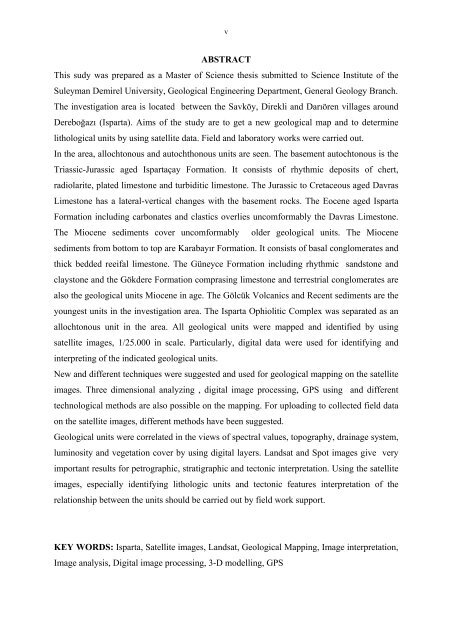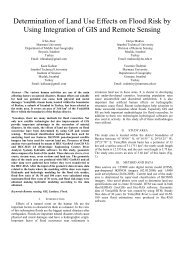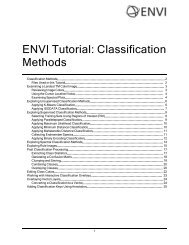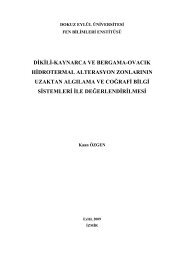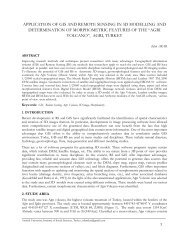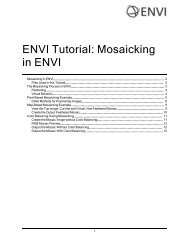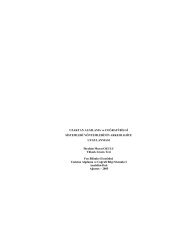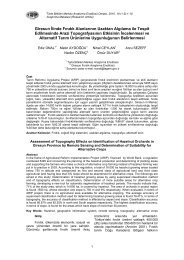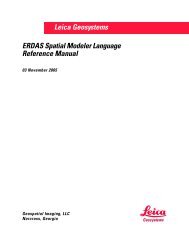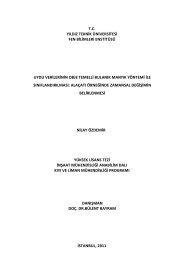ve çevresi örneÄi
ve çevresi örneÄi
ve çevresi örneÄi
Create successful ePaper yourself
Turn your PDF publications into a flip-book with our unique Google optimized e-Paper software.
v<br />
ABSTRACT<br />
This sudy was prepared as a Master of Science thesis submitted to Science Institute of the<br />
Suleyman Demirel Uni<strong>ve</strong>rsity, Geological Engineering Department, General Geology Branch.<br />
The in<strong>ve</strong>stigation area is located between the Savköy, Direkli and Darıören villages around<br />
Dereboğazı (Isparta). Aims of the study are to get a new geological map and to determine<br />
lithological units by using satellite data. Field and laboratory works were carried out.<br />
In the area, allochtonous and autochthonous units are seen. The basement autochtonous is the<br />
Triassic-Jurassic aged Ispartaçay Formation. It consists of rhythmic deposits of chert,<br />
radiolarite, plated limestone and turbiditic limestone. The Jurassic to Cretaceous aged Davras<br />
Limestone has a lateral-<strong>ve</strong>rtical changes with the basement rocks. The Eocene aged Isparta<br />
Formation including carbonates and clastics o<strong>ve</strong>rlies uncomformably the Davras Limestone.<br />
The Miocene sediments co<strong>ve</strong>r uncomformably older geological units. The Miocene<br />
sediments from bottom to top are Karabayır Formation. It consists of basal conglomerates and<br />
thick bedded reeifal limestone. The Güneyce Formation including rhythmic sandstone and<br />
claystone and the Gökdere Formation comprasing limestone and terrestrial conglomerates are<br />
also the geological units Miocene in age. The Gölcük Volcanics and Recent sediments are the<br />
youngest units in the in<strong>ve</strong>stigation area. The Isparta Ophiolitic Complex was separated as an<br />
allochtonous unit in the area. All geological units were mapped and identified by using<br />
satellite images, 1/25.000 in scale. Particularly, digital data were used for identifying and<br />
interpreting of the indicated geological units.<br />
New and different techniques were suggested and used for geological mapping on the satellite<br />
images. Three dimensional analyzing , digital image processing, GPS using and different<br />
technological methods are also possible on the mapping. For uploading to collected field data<br />
on the satellite images, different methods ha<strong>ve</strong> been suggested.<br />
Geological units were correlated in the views of spectral values, topography, drainage system,<br />
luminosity and <strong>ve</strong>getation co<strong>ve</strong>r by using digital layers. Landsat and Spot images gi<strong>ve</strong> <strong>ve</strong>ry<br />
important results for petrographic, stratigraphic and tectonic interpretation. Using the satellite<br />
images, especially identifying lithologic units and tectonic features interpretation of the<br />
relationship between the units should be carried out by field work support.<br />
KEY WORDS: Isparta, Satellite images, Landsat, Geological Mapping, Image interpretation,<br />
Image analysis, Digital image processing, 3-D modelling, GPS


